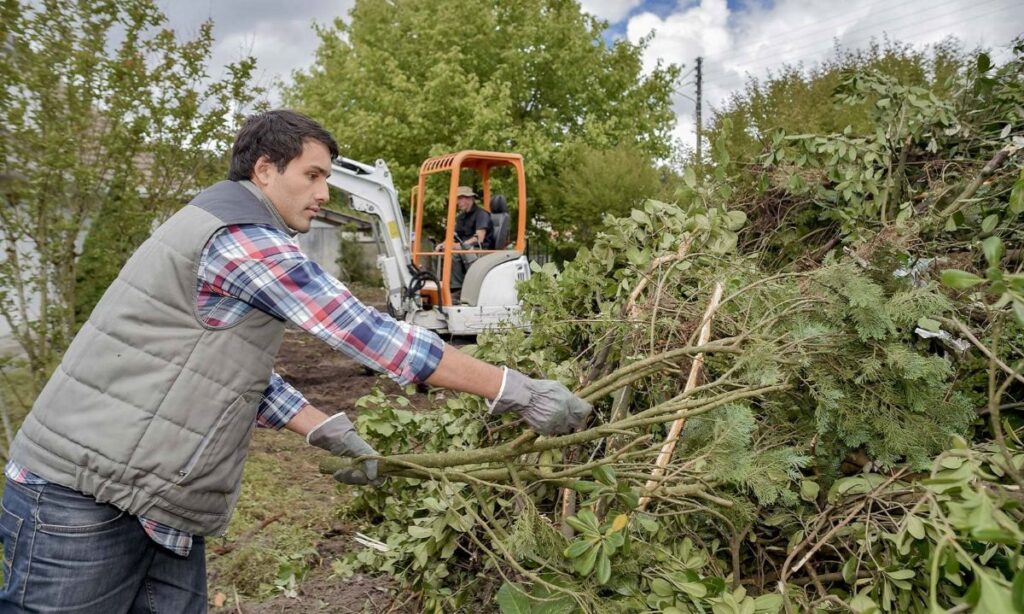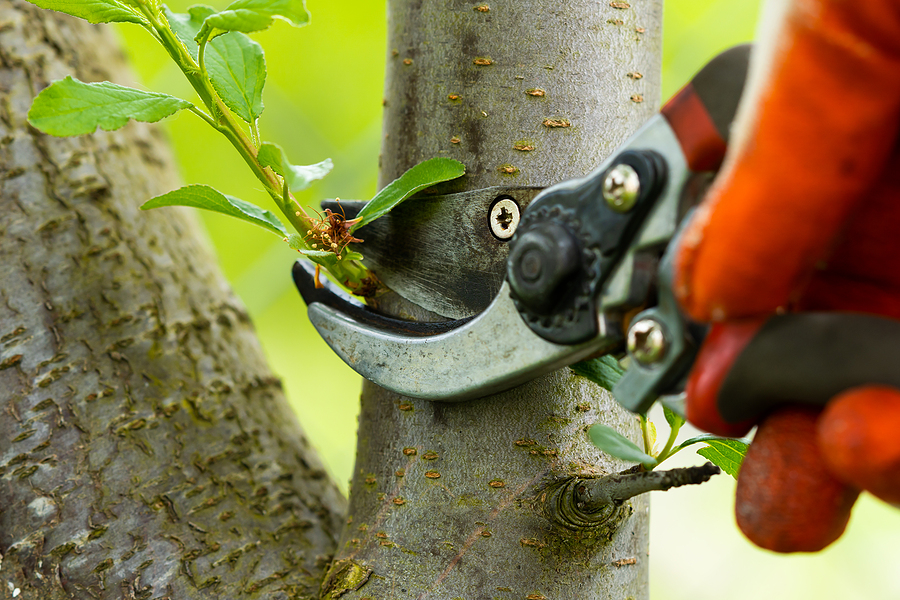Maintaining a beautiful yard is not merely about having a green lawn or colourful flower beds; it also involves caring for the trees that provide shade, structure, and aesthetic appeal. One of the essential aspects of tree care is pruning, which helps to promote healthy growth and enhance the overall appearance of your landscape. However, understanding the costs associated with tree pruning can be daunting. This article aims to break down the tree pruning cost, helping homeowners budget effectively for a stunning outdoor space.
Understanding Tree Pruning
What is Tree Pruning?
Tree pruning is the practice of selectively removing specific branches or stems from a tree. This process is crucial for several reasons, including improving the tree’s health, shaping its growth, and enhancing its appearance. Pruning can also reduce the risk of falling branches, which can pose a hazard to people and property.
There are various techniques used in tree pruning, such as crown thinning, crown raising, and crown reduction. Each technique serves a different purpose and may require different levels of expertise and equipment. Understanding these methods can help homeowners make informed decisions about their tree care needs. For instance, crown thinning involves selectively removing smaller branches to improve light penetration and air circulation within the canopy, which can be particularly beneficial in densely wooded areas. On the other hand, crown reduction is often employed to decrease the overall size of the tree, making it safer in proximity to structures or power lines.
Benefits of Pruning
Pruning offers numerous benefits that extend beyond mere aesthetics. Healthy trees are less susceptible to pests and diseases, and regular maintenance can prevent potential hazards. Additionally, pruning can encourage better air circulation and sunlight penetration, fostering a more robust and vibrant landscape.
Moreover, well-pruned trees can increase property value. A beautifully maintained yard with healthy trees can significantly enhance curb appeal, making a property more attractive to potential buyers. Therefore, investing in tree pruning can yield substantial returns in the long run. Furthermore, pruning can stimulate new growth, leading to a more vigorous tree that produces more flowers or fruit, depending on the species. This is particularly relevant for fruit-bearing trees, where strategic pruning can lead to a more bountiful harvest, turning a simple garden into a fruitful oasis. Additionally, the practice of pruning can also contribute to the overall biodiversity of the area, as healthier trees can support a wider variety of wildlife, creating a thriving ecosystem within your garden.
Factors Influencing Tree Pruning Costs
Tree Size and Species
The size and species of the tree are primary factors that influence tree pruning cost. Larger trees typically require more time and specialised equipment to prune safely, which can increase labour costs. Additionally, certain species may be more challenging to prune due to their growth patterns or wood density, further affecting the overall cost.
For instance, a small ornamental tree may only require a few hours of work, while a towering eucalyptus could take an entire day or more. Homeowners should consider these factors when budgeting for tree pruning, as the costs can vary significantly based on the specific tree in question. Furthermore, the tree’s health and condition can also play a role; trees that are diseased or infested with pests may require additional care and attention, potentially increasing the overall expense. It is crucial for homeowners to consult with a qualified arborist who can assess the tree’s condition and provide a more accurate estimate of the costs involved.
Location and Accessibility
The location of the tree also plays a crucial role in determining pruning costs. Trees situated in hard-to-reach areas, such as near power lines or overhanging structures, may require additional safety measures and equipment, leading to higher labour costs. Furthermore, if the tree is located in a confined space, it may necessitate the use of specialised tools or techniques, further increasing the expense.
Accessibility is another consideration; if the tree is located in a backyard with limited access, the pruning process may take longer and require more effort, impacting the final cost. Homeowners should assess the location of their trees and factor in any potential challenges when budgeting for tree care. Additionally, local regulations may affect pruning practices, particularly in urban areas where trees are protected by law. Understanding these regulations can help homeowners avoid potential fines and ensure that their pruning efforts comply with local guidelines.
Time of Year
The time of year can also influence tree pruning costs. Many arborists have peak seasons, typically in the spring and autumn, when demand for their services is higher. During these times, prices may be elevated due to increased demand. Conversely, scheduling pruning during the off-peak season may result in lower costs and more availability.
Additionally, certain trees are best pruned at specific times of the year to promote healthy growth. Understanding the optimal pruning schedule for various species can help homeowners plan their budget more effectively and ensure their trees receive the care they need. For example, deciduous trees are often pruned in late winter or early spring before new growth begins, while flowering trees may benefit from pruning after their blooms have faded. By aligning pruning efforts with the natural growth cycles of their trees, homeowners can enhance the health and aesthetic appeal of their landscapes while managing costs more efficiently.

Estimating Tree Pruning Costs
Average Costs
On average, homeowners can expect to pay between AUD 150 to AUD 1,000 for tree pruning, depending on the factors discussed above. Smaller trees may cost around AUD 150 to AUD 300, while larger trees can range from AUD 500 to AUD 1,000 or more. These estimates typically include labour, equipment, and disposal of debris.
It’s important to note that these figures can vary based on location, the specific services offered, and the expertise of the arborist. Homeowners are encouraged to obtain multiple quotes from reputable tree care companies to ensure they receive a fair price for the services they require.
Additional Costs to Consider
In addition to the base cost of pruning, homeowners should also consider potential additional expenses. For example, if a tree is diseased or infested with pests, additional treatments may be necessary, which can increase the overall cost. Furthermore, if significant tree removal is required, this will also add to the expense.
Another factor to consider is the cost of cleanup and debris removal. Some tree care companies include this service in their pricing, while others may charge extra for it. Homeowners should clarify what is included in the quote to avoid any surprises when the bill arrives. Visit https://www.aciar.gov.au/media-search/blogs/art-pruning to get more about the art of pruning.
Choosing the Right Arborist
Qualifications and Experience
When selecting an arborist for tree pruning, it is essential to consider their qualifications and experience. A certified arborist will have undergone rigorous training and possess the knowledge necessary to care for trees properly. This expertise can be invaluable in ensuring that the pruning is done safely and effectively.
Homeowners should look for arborists who are members of professional organisations, such as Arboriculture Australia, as this often indicates a commitment to ongoing education and adherence to industry standards. Checking reviews and testimonials from previous clients can also provide insight into the quality of service offered by a particular arborist.
Obtaining Quotes
Once potential arborists have been identified, homeowners should obtain quotes from several companies. This process not only helps to gauge the average cost of tree pruning in the area but also allows homeowners to assess the professionalism and responsiveness of each company. A reputable arborist should be willing to provide a detailed quote outlining the services included, the estimated time required, and any additional costs that may arise.
When comparing quotes, it is essential to consider the overall value rather than simply choosing the lowest price. A slightly higher cost may be justified if it includes comprehensive services, such as cleanup and ongoing maintenance advice.
DIY Tree Pruning: Pros and Cons
Benefits of DIY Pruning
For those who are handy and enjoy gardening, DIY tree pruning can be an appealing option. It allows homeowners to save on labour costs and gives them complete control over the process. Additionally, pruning can be a rewarding experience, as it enables individuals to connect with their trees and understand their growth patterns better.
Moreover, DIY pruning can be an opportunity to learn about tree care and develop skills that may be beneficial for future gardening projects. With the right tools and resources, homeowners can effectively manage their trees without the need for professional assistance.
Risks and Considerations
However, DIY tree pruning is not without its risks. Improper pruning techniques can harm the tree, leading to stunted growth or even death. Additionally, working with large trees can be dangerous, particularly if proper safety precautions are not taken. Homeowners should assess their comfort level and skill set before attempting to prune their trees.
Furthermore, some trees may require specialised knowledge to prune correctly, especially if they are diseased or infested with pests. In such cases, consulting a professional arborist is often the best course of action to ensure the health and safety of both the tree and the individual performing the work.

Conclusion
Tree pruning is an essential aspect of maintaining a beautiful and healthy yard. Understanding the costs associated with this process can help homeowners budget effectively and make informed decisions about their tree care needs. By considering factors such as tree size, location, and timing, homeowners can better estimate the costs involved and choose the right arborist for the job.
While DIY pruning may be an option for some, it is crucial to weigh the benefits against the risks. For those who are unsure, enlisting the help of a qualified arborist can ensure that trees are pruned safely and effectively, ultimately contributing to a stunning outdoor space.
Investing in tree pruning not only enhances the beauty of a yard but also promotes the health and longevity of the trees that provide so much value to a property. With careful planning and consideration, homeowners can achieve a beautiful and thriving landscape that they can enjoy for years to come.
Related : 5 Reasons to Hire a Professional Tree Pruning Service for Long-Term Tree Health

